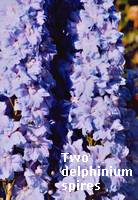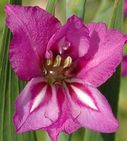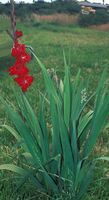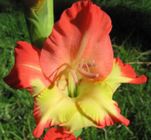Şakayık bitkisi; basit veya katmerli beyaz ,pembe, kırmızı renklerde çiçek veren çok güzel bir süs bitkisidir. Genelde bahçe peyzajı için çok sık kullanılır. Dayanıklı bir bitki olarak bilinir. Bu özelliği sayesinde bahçelerde sık tercih edilen bitkilerdendir.
Katmerli rengarenk çiçekleri vardır. Nisan ayından başlayıp haziran sonlarına kadar çiçeklenebilme özelliğine sahip.
Şakayık Çiçeğinin Toprak İsteği:
Şakayık bitkisi toprak olarak humus bakımından zengin topraklarda güzel gelişim gösteriyor. Eğer evde saksıda yetiştiriciliğini yapacaksanız humus bakımından zengin toprak seçimi yapmalısınız. Ayrıca saksı drenajını da iyi yapmanız gerekmekte. Toprak karakteri olarak nemli toprakları sever. Toprağının aşırıya kaçmadan nemli kalmasını sağlarsanız bitkinizin gelişimi iyi olacaktır.
Bahçede yetiştiriciliğini yapacaksanız yine nemli, humus bakımından zengin toprak seçimi yapın. Toprağına yaprak ve odun çürüntüsü bulup ekleyebilirseniz toprağınız humus bakımından zenginleşecektir.
Şakayık Bakımı ve Su İsteği:
- Sıcak ve ılıman iklimlerden hoşlanır. Güneşli yerleri sever.
- Gayet yavaş büyürler.
- Yüksekliği genellikle 1 m civarında olur.
- Şakayık çiçeğinin kökü ve yaprakları ilaç olarak kullanılır.
- 3 günde bir belirli ölçekte ve aynı saatlerde su verilmesi gerekir. Sulamasını geciktirmemeye özen gösterilmelidir. Eğer saksıda yetiştiriyorsanız zamanında ve aynı ölçekte su kullanmaya özen gösterin.
- Yaz aylarında daha sık sulama yaparken kış aylarında toprak nemine bakarak sulama yapmalısınız. Bunu anlamak için parmağınızı saksı toprağına batırın eğer nem oranı azalmışsa sulamasını yapabilirsiniz. Bitkilerin kışın su ihtiyaçları az olacağından aşırı sulama yapmamaya özen gösterin. Aksi halde bitkinizin kökleri aşırı sudan çürümeye başlayacaktır.
- Soğuğu pek sevmeyen bir bitkidir. Bu yüzden evde oda sıcaklığında yetiştiriciliğini yapmalısınız. Güneşi seven bir bitki türüdür şakayık. Bu nedenle özellikle kış aylarında güneş alan yerlerde bulundurmanız gerekiyor. Aşırı soğuk ve aşırı sıcak ortamlardan da korumanız gerekiyor.

Şakayık Bakımı
Şakayık Çiçeği Nasıl Çoğaltılır?
Şakayık çoğaltmak için en güzel yöntem aşılanmış, yumrulu şakayık çiçekleri tercih etmektir.
Tohum ve kalem aşı yöntemleri ile çoğaltılabilir. Tohumla üretim yalınkat çeşitlerde kullanılır. Ancak tohumla üretimde bitkinin büyüme hızı oldukça yavaştır ve 2 yılın sonunda çiçek açarlar. İlkbaharda soğuk yastıklara ekilirler. Tohumlar eğer birkaç yıllık ise birkaç saat suda bekletilmelidir sert kabuklarının yumuşaması için.






 Gladiolas thrive when specific conditions are met. They love humidity and warmer regions. They require consistent water and a well-tilled, rich soil. When should you plant gladiolas? Well, it depends on where you live. Check the package of your corm bulb and determine which zone you live in. Typically, when planting gladiolas, you plant the corm bulbs during the spring season, when any threat of frost has passed.
Gladiolas thrive when specific conditions are met. They love humidity and warmer regions. They require consistent water and a well-tilled, rich soil. When should you plant gladiolas? Well, it depends on where you live. Check the package of your corm bulb and determine which zone you live in. Typically, when planting gladiolas, you plant the corm bulbs during the spring season, when any threat of frost has passed.  Where to plant
Where to plant  You can expect to start seeing blooms in about three months or less after planting the corms. Your stems may need some support during the growth period, therefore, you may want to consider staking them up to keep them perky and tall.
You can expect to start seeing blooms in about three months or less after planting the corms. Your stems may need some support during the growth period, therefore, you may want to consider staking them up to keep them perky and tall. 





































